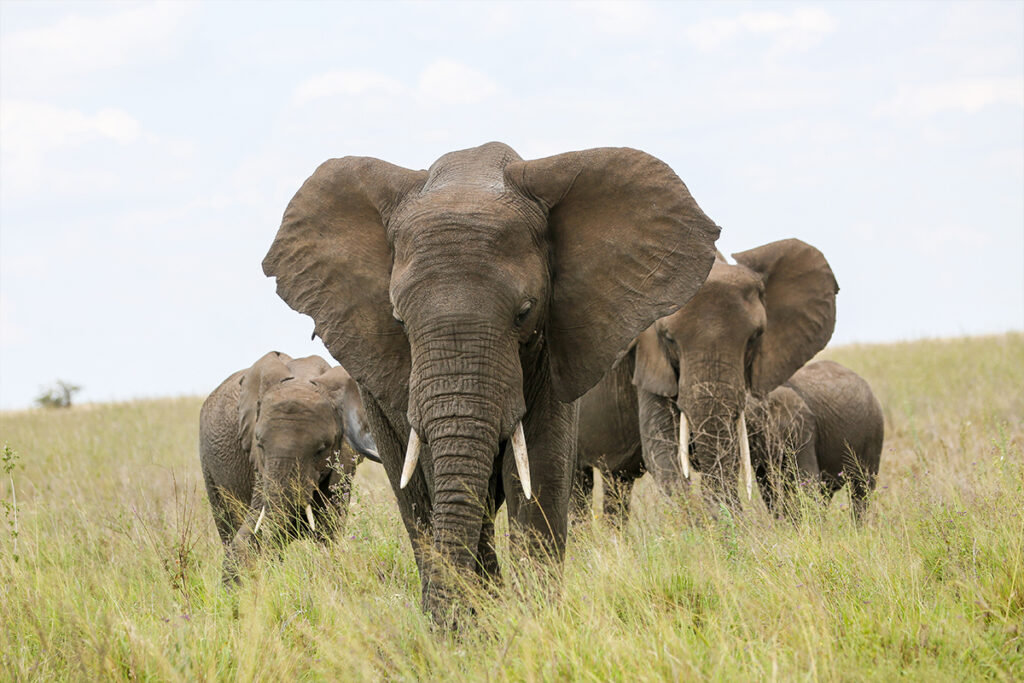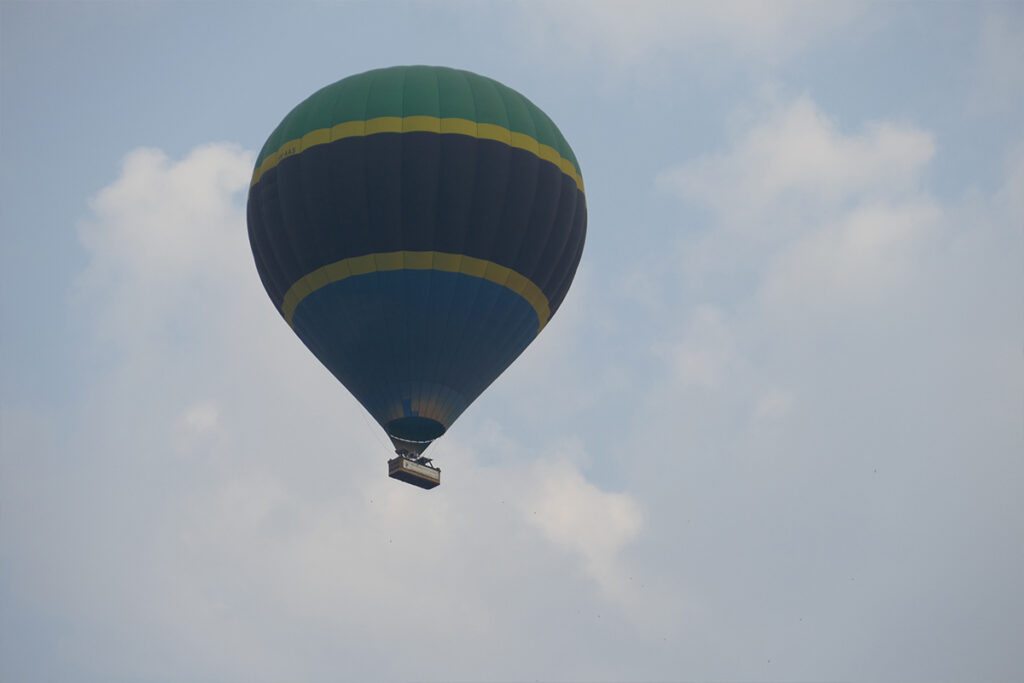Every year, the serene plains of East Africa come alive with vibrant colors, sounds, and stories during the Maasai Cultural Festival. A tradition that’s both deeply rooted and dynamically evolving, this festival draws communities from afar to converge in celebration. The Maasai people, known for preserving their unique customs, use this occasion to showcase their rich heritage and sharing it with the world.
Having first emerged as a local gathering, the festival now attracts thousands, showcasing traditional dance, music, and crafts from across the region. With origins tracing back centuries, the event bridges generations, blending historical reverence with contemporary relevance. Moreover, the festival not only nurtures cultural identity but also fosters economic opportunities for local artisans, ensuring the community thrives holistically.

Significance of the Maasai Cultural Festival
The Maasai Cultural Festival holds a unique place in the hearts of its people. It serves as a vibrant celebration of the Maasai heritage, bringing communities together in unity. Families gather to honor their rich history, and young children learn the ways of their ancestors. Beyond a celebration, the festival plays a vital role in preserving the customs for future generations. It keeps traditions alive, ensuring they are passed down without losing their essence.
One key aspect of the festival is its role in education. Young Maasai people learn essential skills and cultural practices during this time. Songs and dances aren’t just for entertainment; they are lessons in history and storytelling. According to the article, the festival acts as a living classroom, where experiential learning takes the lead. By participating, youths connect with their roots in an interactive and engaging manner.
The festival also impacts the local economy positively. It attracts visitors from all over, boosting tourism and creating income opportunities for residents. Crafts and traditional attire find eager buyers among tourists. Local businesses thrive during the festival season, benefiting from the increased foot traffic. As detailed here is the article, these economic benefits ripple throughout the community, reinforcing the festival’s importance beyond just cultural aspects.
Moreover, the festival fosters a sense of community and identity among the Maasai. It offers a platform for individuals to express their pride in their culture. This sense of belonging strengthens community bonds and supports cultural cohesion. The Maasai people find joy and solidarity in this shared experience, amplifying their collective identity. Through festivities, they reinforce their commitment to maintaining their cultural legacy for years to come.
Cultural festival organised to conserve Maasai Culture in Narok | WION
A Look into Its Historical Roots and Evolution
The Maasai Cultural Festival has deep historical roots, tracing back to traditions long before modern disruptions. Originally, it served as a communal gathering to celebrate significant events and honor ancestral spirits. These early gatherings were intimate, spreading important stories and wisdom through generations. Over time, this intimate event has expanded, adapting to changing times and influences. Yet, the core of the festival remains anchored in honoring heritage.
As it evolved, the festival incorporated new elements while preserving its traditional essence. Changes in Maasai society, like the introduction of modern technology, have added fresh dynamics. Now, one can see a blend of traditional performances with contemporary influences, appealing to younger audiences. According to some local accounts, this fusion keeps the festival relevant and exciting. It not only attracts locals but also international visitors, eager to experience this unique spectacle.
The historical importance of the festival also lies in its role in uniting scattered Maasai communities. Though geographically diverse, the festival offers a central reason to gather and celebrate shared ancestry. It’s a melting pot of experiences where diverse sub-groups showcase their unique customs. Through this exchange, they create a broader understanding and respect for varied traditions. Such unity helps maintain peace and solidarity among various sections of the Maasai people.
Tables at the festival often showcase a rich array of traditional crafts and attire, each with its own story. These items are not merely decorative; they are symbolic of the Maasai identity. Visitors can explore items like intricately beaded jewelry, beautifully woven cloth, and hand-carved artifacts. These crafts reflect the artistry passed down through generations, anchoring historical significance in every piece. Thus, the festival continues to evolve, all the while honoring its deep-rooted origins.
Key Traditions and Rituals Showcased at the Festival
At the heart of the Maasai Cultural Festival are vibrant traditions and rituals that captivate attendees. One of the most striking is the “jumping dance,” or Adumu, performed by young warriors. This dance is more than just a spectacle; it’s a form of expression and competition among the warriors. They jump in turns, aiming to reach incredible heights, showcasing physical prowess and stamina. It’s a visual feast that never fails to amaze the audience.
Another cherished tradition is the storytelling sessions held around crackling fires. Elders share tales passed down from generation to generation, weaving stories of heroism and wisdom. These narratives are crucial for teaching young Maasai about their rich history and cultural beliefs. Sometimes, stories are accompanied by singing or chanting, adding drama and depth. This oral tradition keeps ancient myths and legends alive within the community.
Also featured at the festival are intricate Maasai crafts, showcasing the impressive skills of local artisans. Tables feature a dazzling display of handmade jewelry, colorful beads, and woven items. Each piece tells a story about the craftsman’s family, region, or personal journey. These crafts hold cultural meanings, representing social status, age, and milestones. Visiting stalls, festival-goers often find themselves immersed in Maasai artistry.
The festival wouldn’t be complete without the communal feasts, where traditional Maasai cuisine takes center stage. Dishes like nyama choma (grilled meat) are shared, symbolizing unity and hospitality. These meals provide a delicious way to explore Maasai culinary traditions while fostering camaraderie among attendees. Food, like other traditions, plays a crucial role in celebrating and strengthening community ties. Through these cherished practices, the festival continually honors and showcases the Maasai way of life.
The Role of Music and Dance in Maasai Culture
Music and dance hold a central place in Maasai culture, symbolizing various aspects of their daily life and spirituality. These expressive forms serve more than just entertainment; they embody a connection to the past and present. Songs often accompany significant events like weddings, rites of passage, and community gatherings. The rhythmic patterns and lyrics tell stories of valor, adventures, and ancestral wisdom. Consequently, music and dance help preserve cultural values and narratives for future generations.
The Adumu, or jumping dance, is one of the most recognized Maasai dances worldwide. Performed by young men known as morans, it showcases their strength and agility. The dancers form a circle, taking turns to jump as high as they can, without bending their knees. This dance is not just about physical prowess; it is also a social and ritualistic event. It marks the transition of young warriors into adulthood, symbolizing their readiness to take on responsibilities.
- Rites of Passage: Rituals like Eokoto E-Kule, a dance with intricate footwork, performed by initiates.
- Harvest Celebrations: Songs and dances that express gratitude for good harvests and blessings.
- Weddings: Elaborate performances that celebrate union and community ties.
- Increased tourism revenue
- Job creation and business growth
- Preservation of cultural heritage
- Strengthened community ties
- Enhanced social services
Women also play a crucial role in Maasai music and dance, adding their voices and movements to various ceremonies. Their songs often revolve around daily chores, family life, and tales of strong women figures. Women’s dances feature synchronized steps and coordinated hand movements, creating a mesmerizing visual effect. These dances are more than just performances; they are community-building activities. Through their participation, women reinforce social bonds and pass on traditions.
Different traditional instruments enhance the musical experience, creating unique sounds that can’t be mistaken. The orutu, a single-stringed instrument, is often used to maintain rhythm during dances. It pairs harmoniously with vocal chants and drumbeats, contributing to a rich sonic landscape. Elders frequently lead the songs, setting the pace and ensuring that the rhythms align with the intended emotions. Every beat and note connects the participants to their cultural essence, making each performance profoundly meaningful.
Click here is the article to learn more about the significance of these cultural practices. The blend of music, dance, and communal participation at the Maasai Cultural Festival illustrates the depth of Maasai heritage. Their performances bring history to life, infusing it with contemporary relevance. In this way, music and dance continue to be vital threads in the fabric of Maasai culture, uniting people across ages and backgrounds.
Economic and Social Impact on the Maasai Community
The Maasai Cultural Festival significantly boosts the local economy by attracting tourists from all over the world. This influx of visitors creates demand for goods and services, such as lodging, food, and transportation. Local artisans also benefit financially by selling traditional crafts like jewelry, clothing, and ornaments. These sales provide a steady source of income, helping families improve their living standards. Moreover, the festival’s economic activities contribute to regional development projects.
The social impact of the festival is equally profound, fostering a strong sense of community and identity among the Maasai people. It offers a venue for communal gatherings, where people of all ages participate and reconnect. This shared experience strengthens family bonds and social networks within the community. Young people learn about their cultural heritage, which helps preserve traditions and pass them down to future generations. The festival also provides a platform for addressing social issues and promoting unity.
Healthcare and education initiatives often align with the festival, addressing pressing community needs. Organizations set up booths to offer health services like vaccinations and screenings. Educational programs inform attendees about various topics, from environmental conservation to women’s rights. These initiatives demonstrate how the festival goes beyond cultural celebration, offering tangible benefits to the community. It’s an integrated approach to development, combining culture with essential services.
Through these economic and social benefits, the Maasai Cultural Festival plays a pivotal role in the well-being of the community. It provides a holistic approach to development, where culture and prosperity go hand in hand. The festival allows the Maasai to showcase their rich heritage while evolving to meet contemporary needs. This dynamic balance ensures the sustainability of both their culture and economy.
Preservation Efforts and the Future of the Festival
To ensure the Maasai Cultural Festival continues to thrive, numerous preservation efforts are in place. Community leaders work tirelessly to protect the unique traditions and rituals that define the Maasai culture. Workshops and training programs are organized to teach younger generations about their heritage. These initiatives focus on everything from language preservation to artisanal skills. By engaging the youth, they foster a sense of pride and responsibility towards cultural conservation.
Technology also plays a role in transforming preservation strategies, ensuring the festival’s longevity. Digital platforms help share and document festival activities, making cultural practices accessible to a global audience. Social media campaigns, blogs, and online videos capture the vibrancy of Maasai traditions. Through this medium, the community connects with supporters who value cultural diversity. This broader reach increases awareness and amplifies the festival’s significance worldwide.
Sustainability efforts aim to ensure the festival benefits both people and the environment. Organizers are taking initiatives to reduce waste and promote eco-friendly practices during the event. Traditional practices like foraging and recycling are reintroduced to younger audiences. Collaboration with environmental organizations helps integrate green solutions. These efforts contribute to preserving the natural resources the Maasai community relies upon.
Challenges still exist, such as balancing modernization with cultural retention. External influences and economic pressures sometimes threaten to dilute tradition. Building alliances with cultural preservationists and non-profit organizations helps mitigate these risks. By sharing resources and expertise, the Maasai community fortifies its cultural treasures. Such collaborations are vital for crafting a sustainable future for the festival.
Embracing innovation while staying true to core values will shape the future of the Maasai Cultural Festival. Continued support from local and international allies is crucial. Together, these concerted efforts will ensure the festival remains a vibrant testament to Maasai culture. The focus on sustainability and education is encouraging and paves the way for future generations. This bright outlook ensures that the festival will continue to be a beacon of cultural pride and unity.

Frequently Asked Questions
The Maasai Cultural Festival is a captivating event celebrated by the Maasai community. It showcases unique traditions, fostering unity and cultural preservation. Here are some insightful questions and answers about this vibrant festival.
1. What is the main purpose of the Maasai Cultural Festival?
The primary goal of the Maasai Cultural Festival is to preserve and celebrate the rich traditions of the Maasai people. It offers a platform for showcasing their music, dance, art, and rituals, creating a vibrant tapestry of cultural heritage. This celebration strengthens community bonds and inspires pride among the Maasai, ensuring their cultural identity continues for generations.
Furthermore, the festival serves as a conduit for economic and social development within the Maasai community. It attracts tourists and visitors, boosting local businesses and creating opportunities for artisans. Such economic engagement is vital for sustaining community initiatives and fostering an environment where Maasai culture thrives alongside modern influences.
2. How do music and dance contribute to the festival’s success?
Music and dance are integral components of the Maasai Cultural Festival, providing an engaging backdrop to the celebrations. Performances like the famous “jumping dance” embody the spirit of Maasai traditions, captivating audiences while reinforcing cultural values. These vibrant expressions serve as both entertainment and cultural education, enriching the festival experience for all participants.
Moreover, music and dance offer a unifying platform, bringing together people of all ages. They encourage participation and interaction, nurturing a sense of community and shared identity. By highlighting Maasai history and beliefs through these dynamic mediums, the festival reinforces connections between generations and promotes cultural continuity.
3. How does the festival impact the local economy?
The festival is a significant economic driver for the Maasai community, greatly benefiting local businesses and artisans. During the event, many visitors flock to the region, increasing demand for accommodations, food, and services. This influx of tourists translates into financial gains for local vendors, stimulating the community’s economic growth and sustainability.
Moreover, the spotlight on Maasai crafts and traditional goods opens new markets for artisans. The festival offers a platform to sell handmade jewelry, clothing, and artifacts, establishing a broader customer base. These economic opportunities contribute to job creation and have a lasting impact on the community’s well-being.
4. What are some challenges faced in preserving Maasai traditions?
Preserving Maasai traditions faces challenges such as modernization pressures and external cultural influences. The integration of modern technology and lifestyles can sometimes overshadow traditional practices, putting them at risk of being forgotten. This evolving landscape requires innovative strategies to ensure that Maasai customs remain relevant and resonate with younger generations.
Furthermore, economic hardships can divert focus from cultural preservation as communities strive for basic needs and survival. Resources and support can be limited, making it difficult to prioritize these endeavors. However, continued efforts through education, community participation, and international partnerships are key to overcoming these obstacles and fostering a sustainable future for Maasai culture.
5. How does the festival promote cultural exchange?
The Maasai Cultural Festival acts as a bridge, promoting cultural exchange between the Maasai community and visitors from diverse backgrounds. By inviting attendees into their world, the Maasai people share their stories, customs, and way of life, fostering understanding and respect. This engagement enhances cross-cultural dialogue and appreciation, enriching the experiences of both the hosts and guests.
Additionally, visitors partake in activities such as traditional crafts, games, and food, offering a firsthand glimpse into Maasai life. This interaction provides an invaluable learning opportunity and cultivates global connections. In turn, such exchanges encourage broader support for preserving Maasai traditions, ensuring they remain a cherished part of the world’s cultural tapestry.
Maasai culture in spotlight | World Of Africa
Conclusion
The Maasai Cultural Festival stands as a profound celebration of both tradition and community. Rooted in a rich history, it provides a vibrant platform for showcasing cultural heritage and fostering unity among the Maasai people. The festival offers economic benefits, while also serving as a crucial tool for cultural education and preservation.
As the world evolves, the festival’s blend of ancient practices and contemporary relevance ensures its enduring significance. Efforts to sustain this cultural beacon are vital for nurturing future generations’ connection to their roots. The Maasai Cultural Festival continues to serve as a powerful testament to the resilience and vibrancy of Maasai culture.



